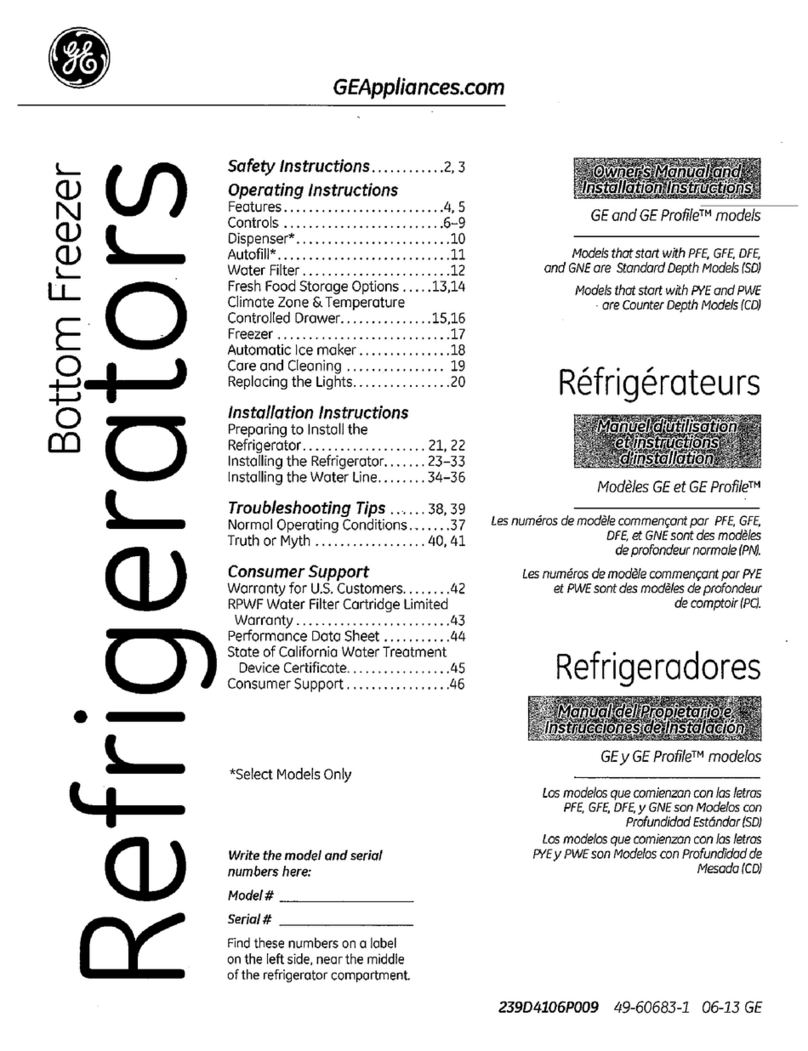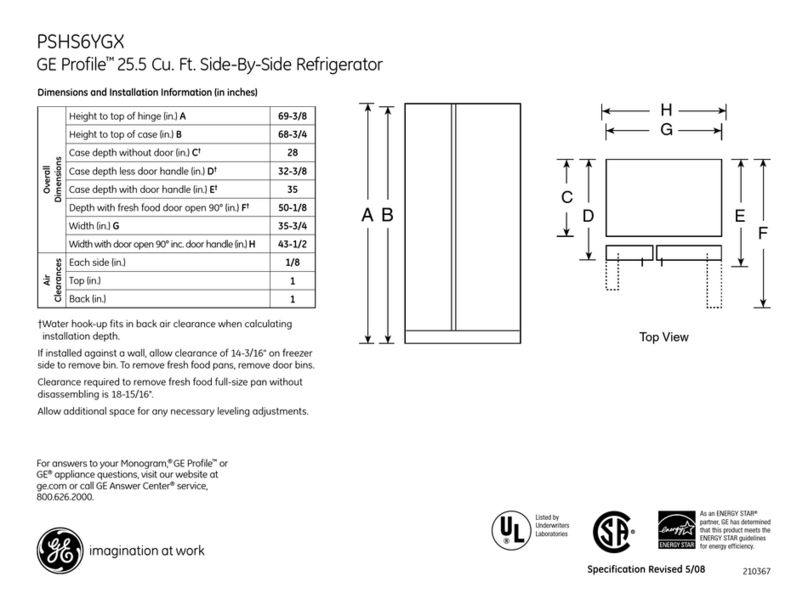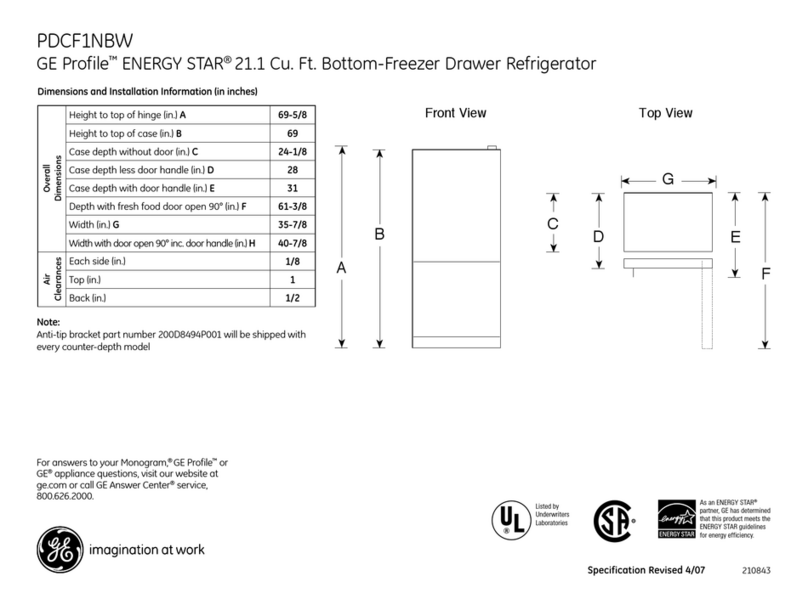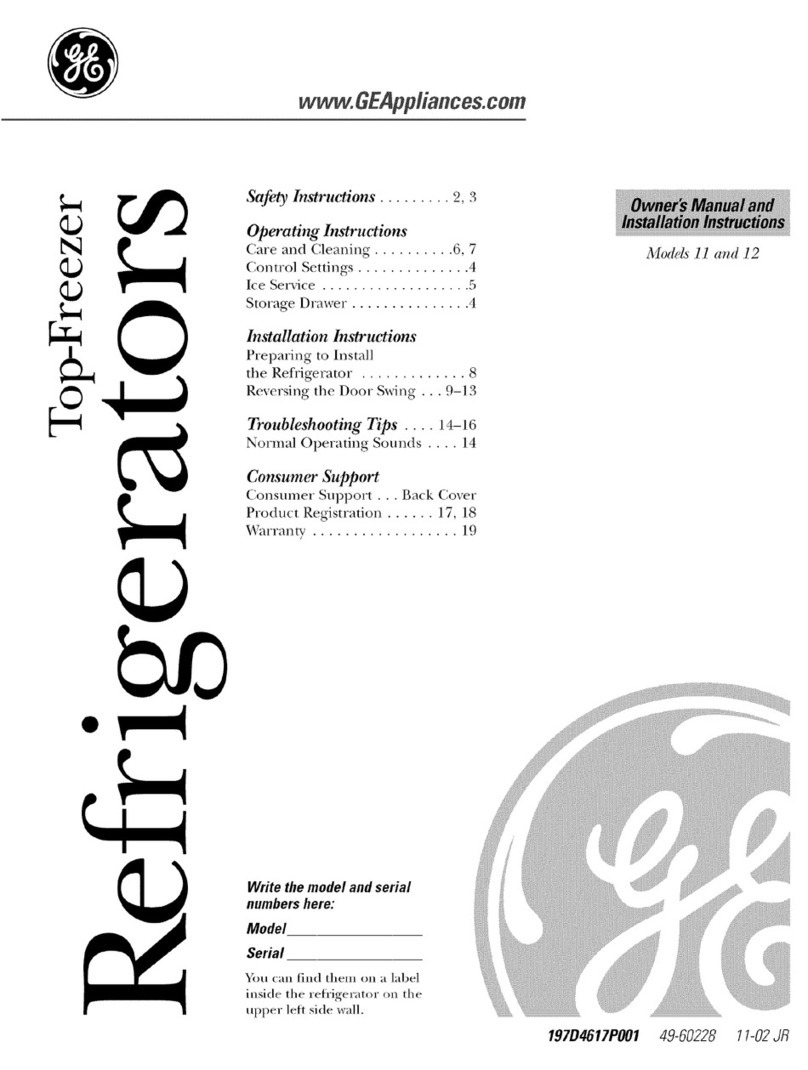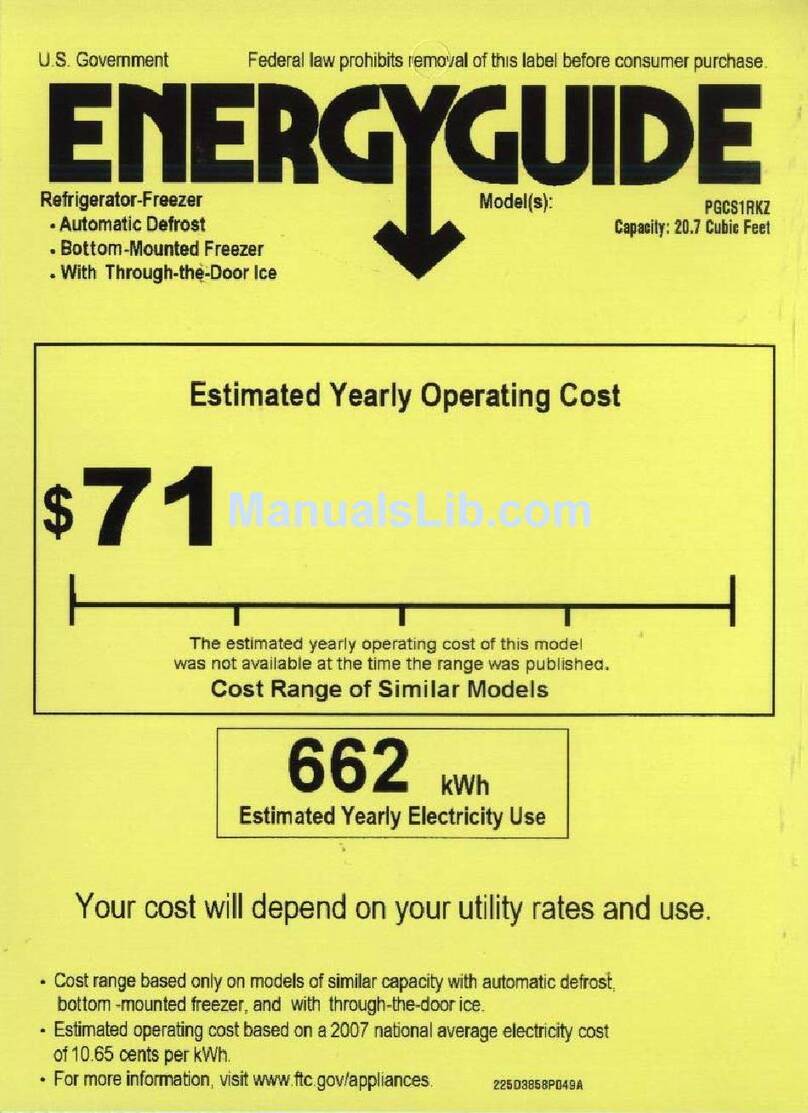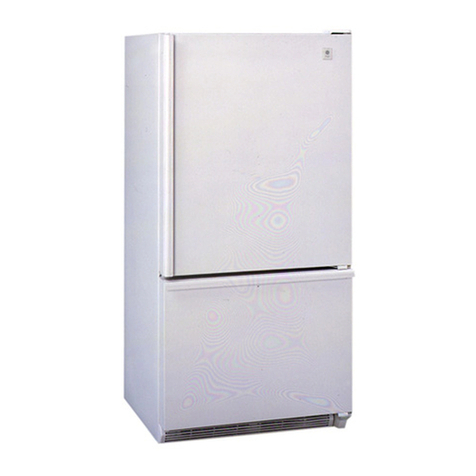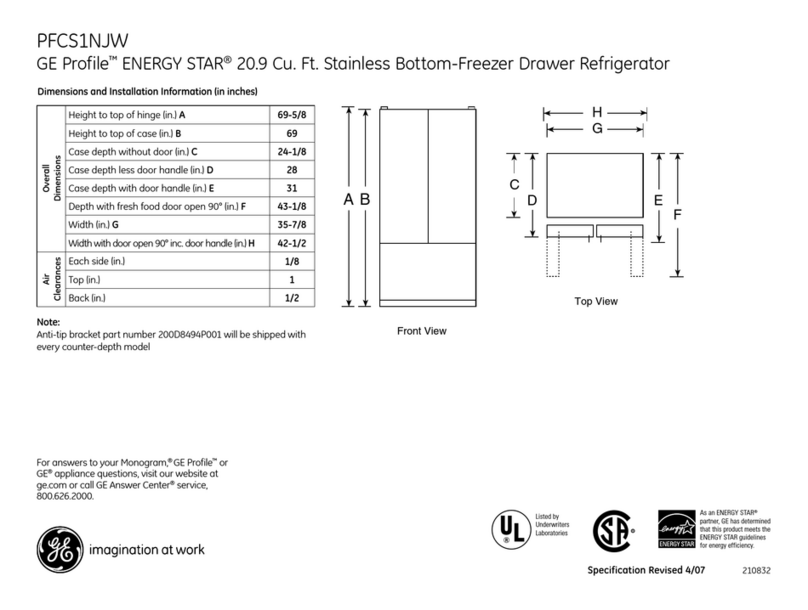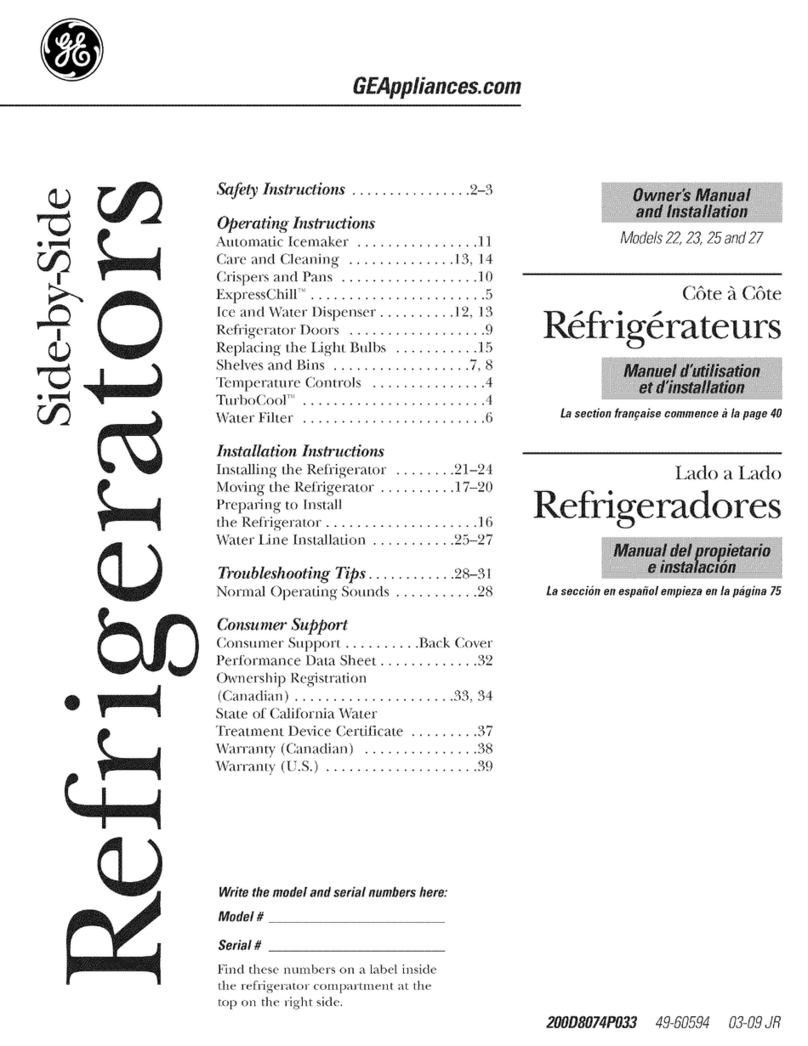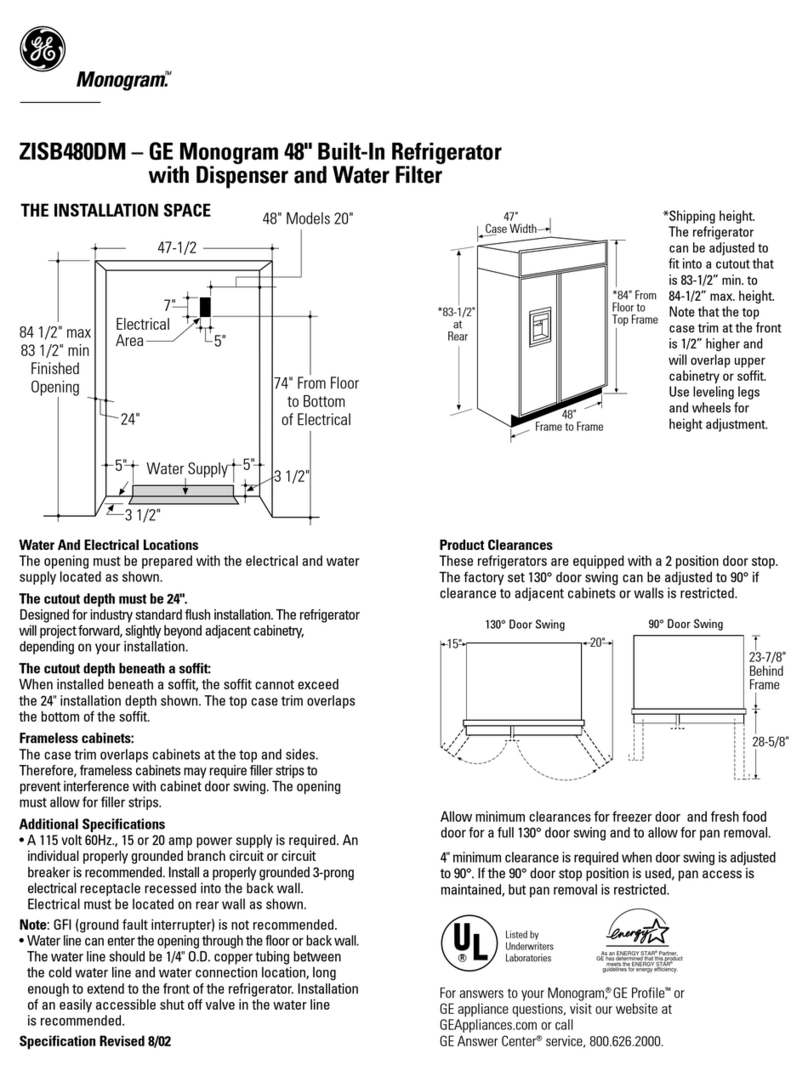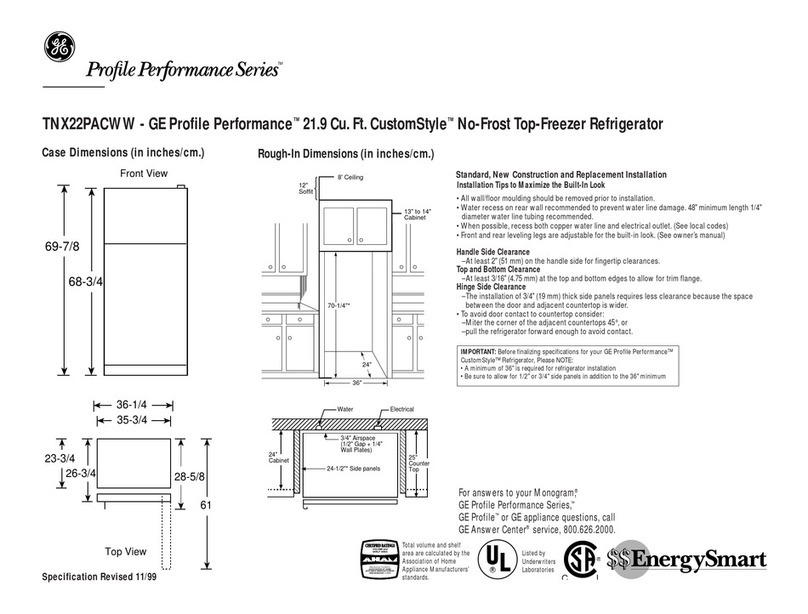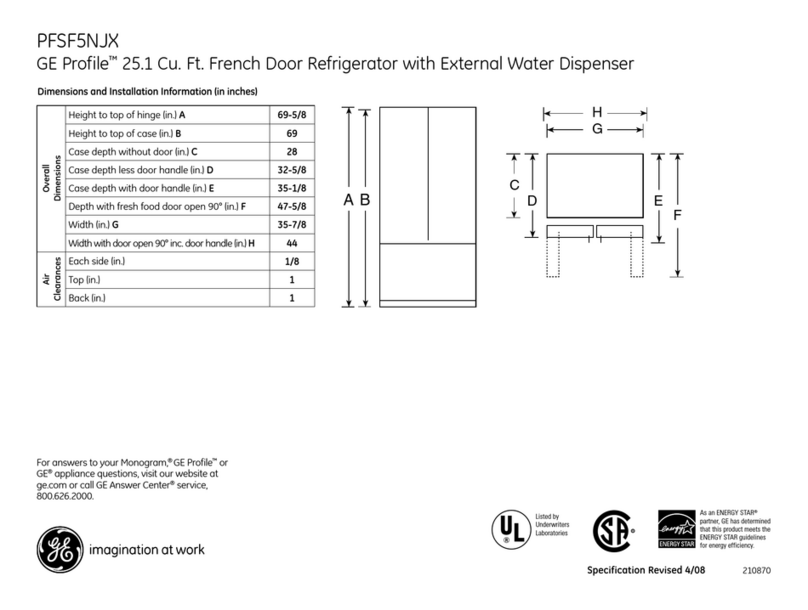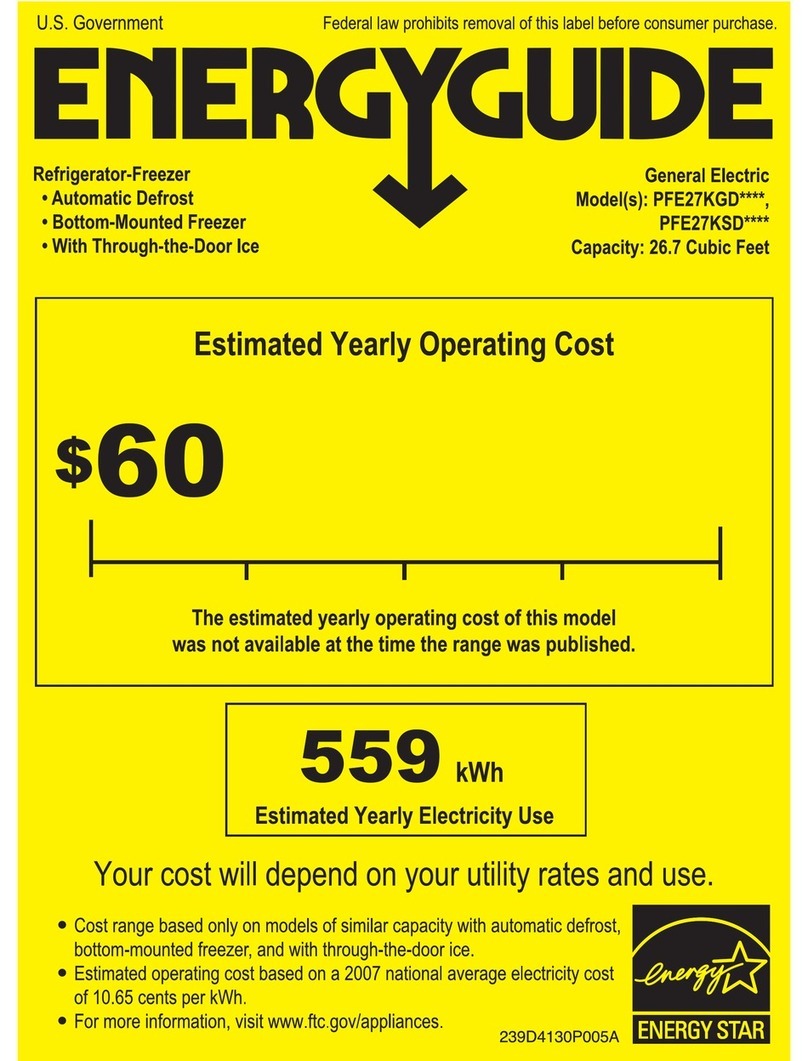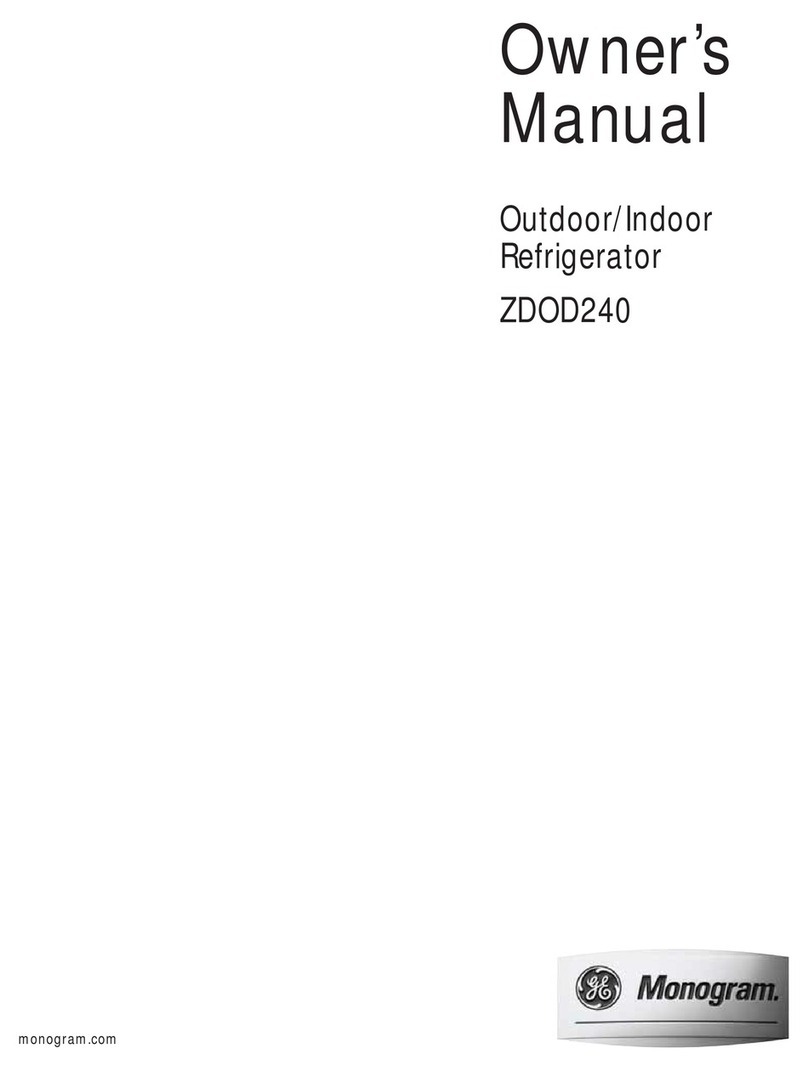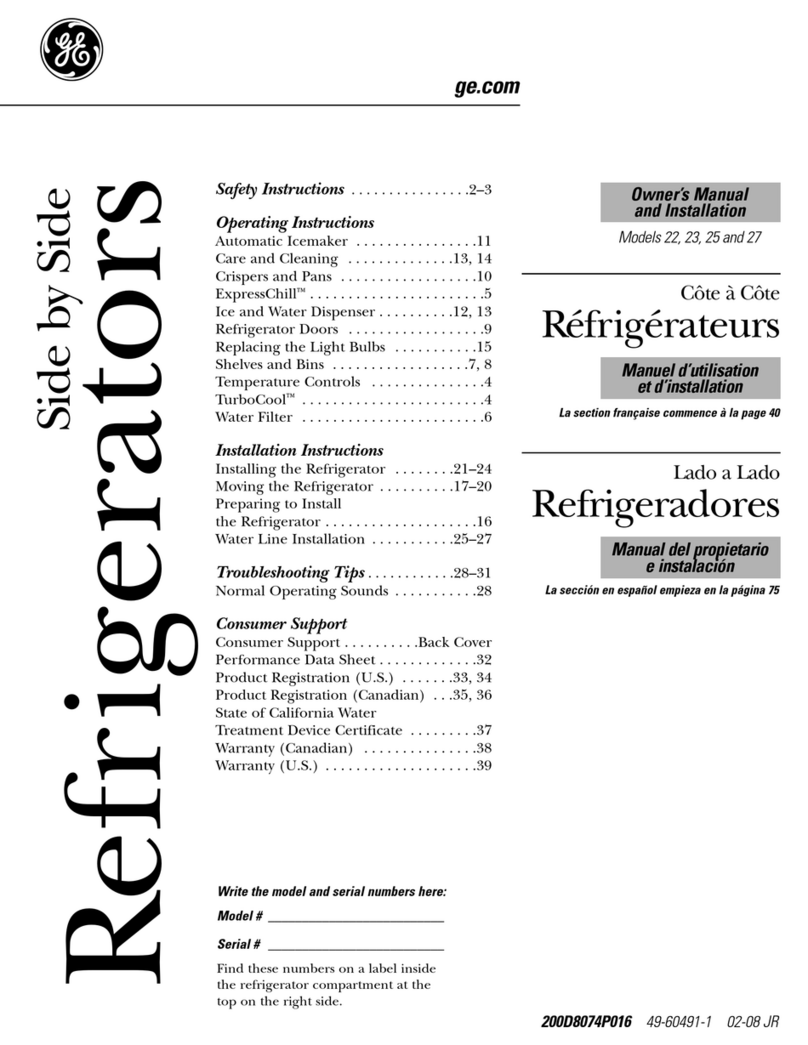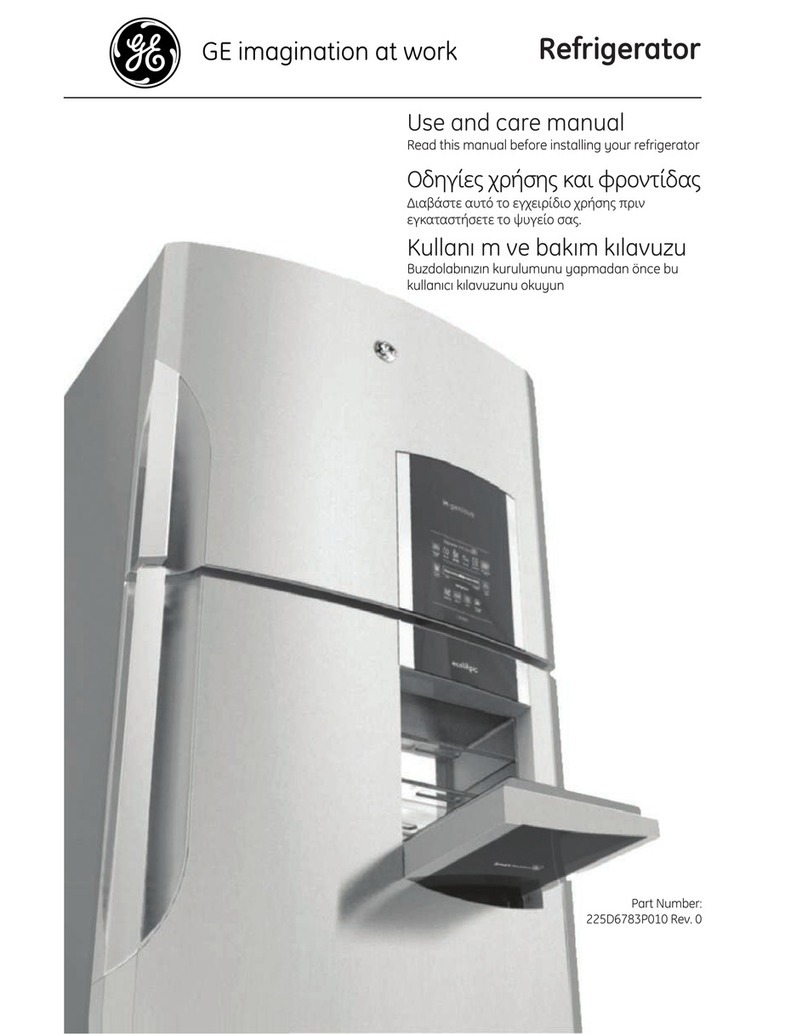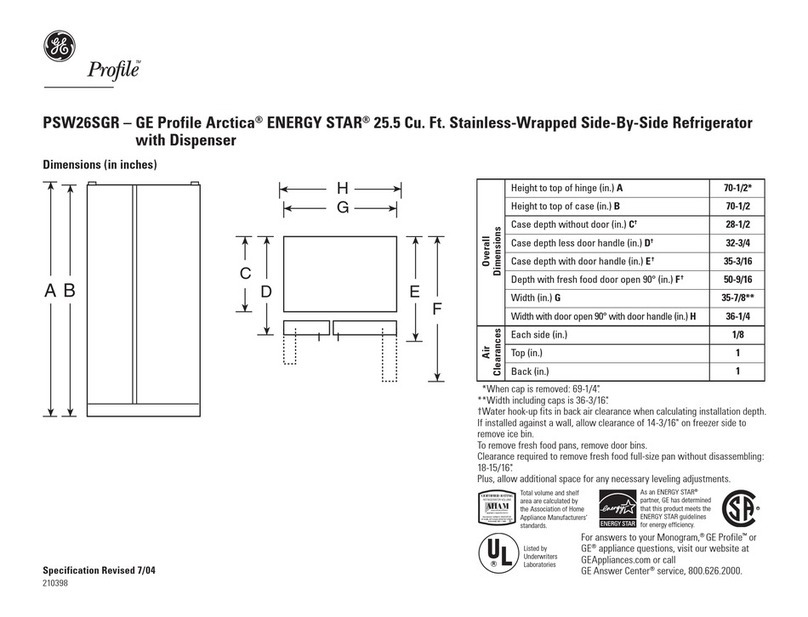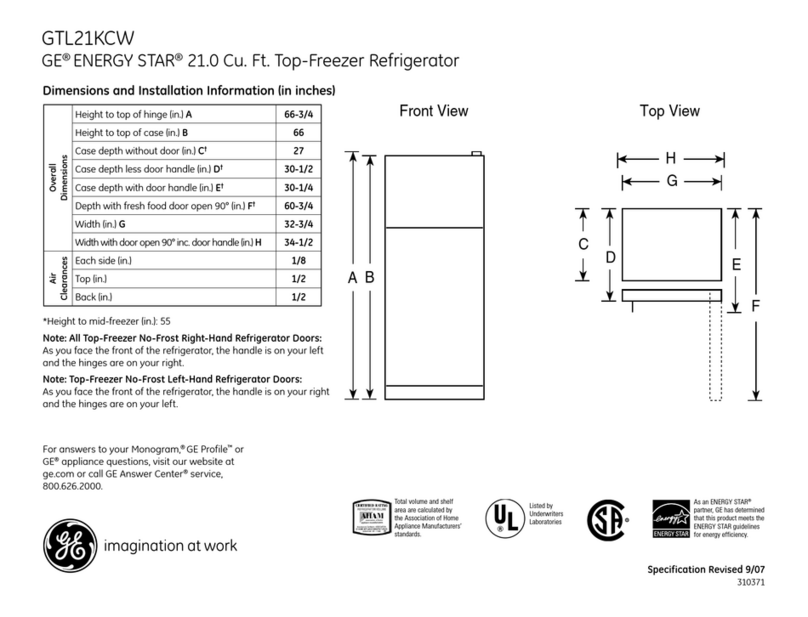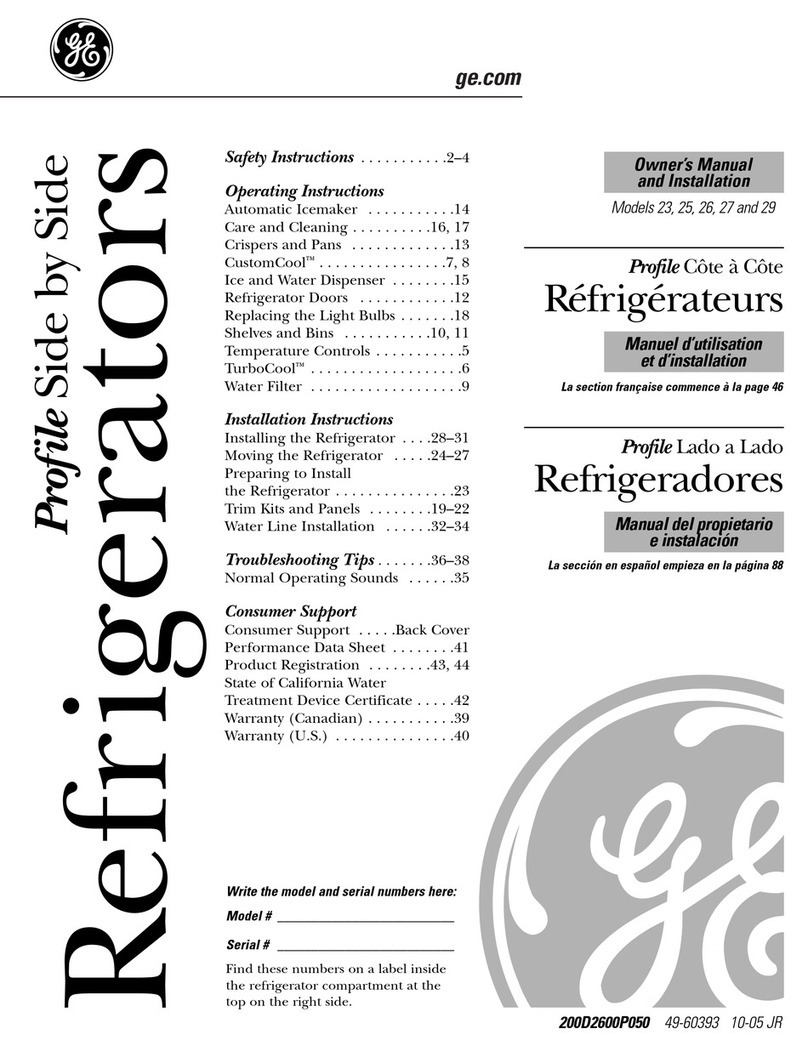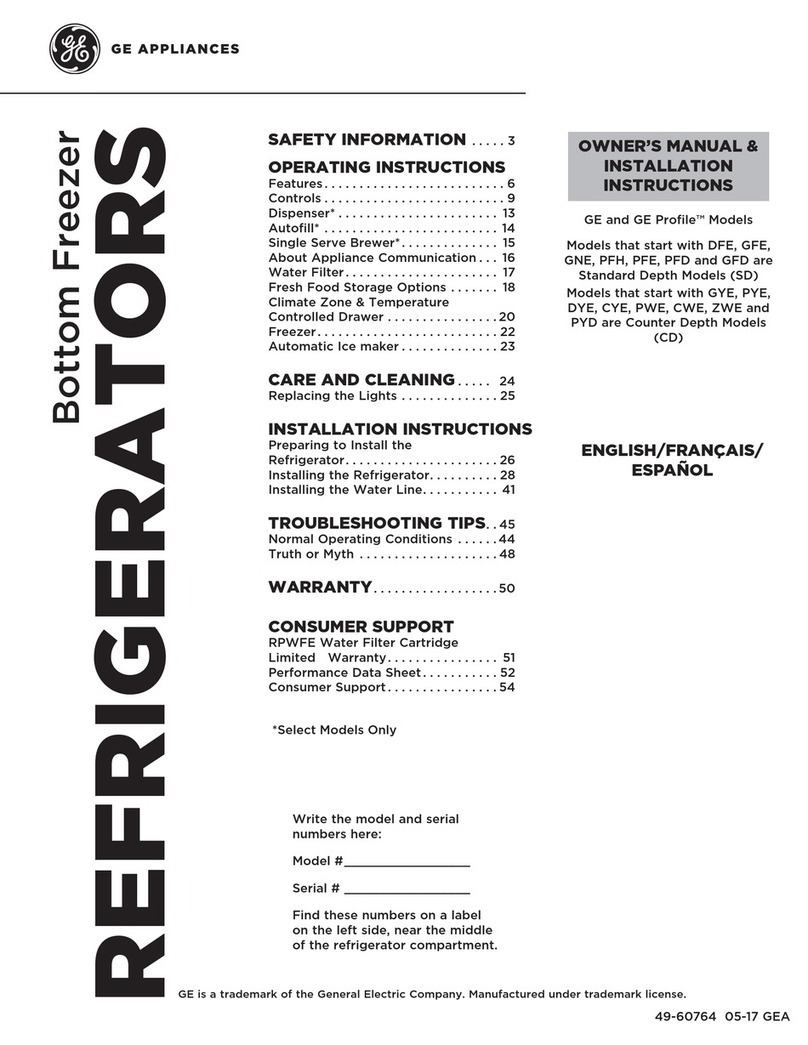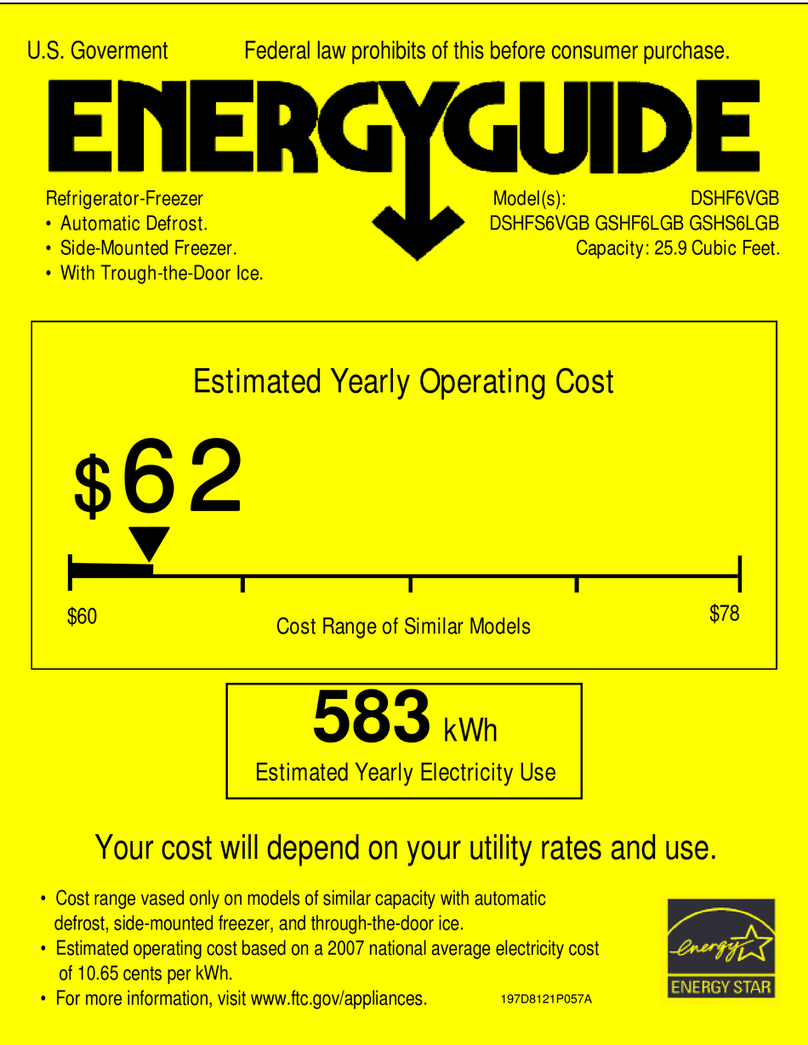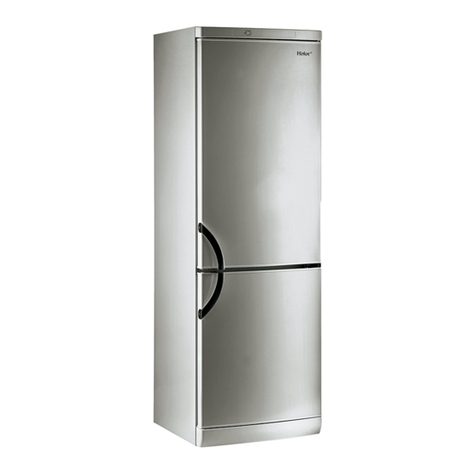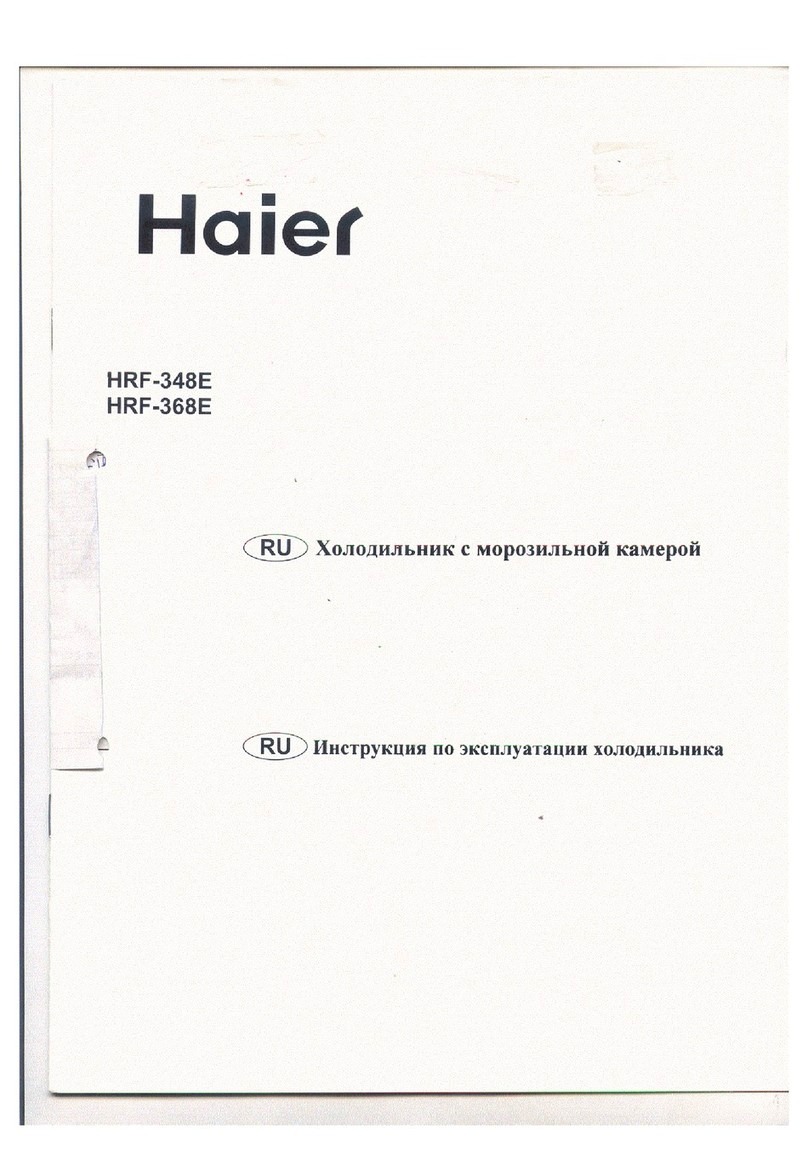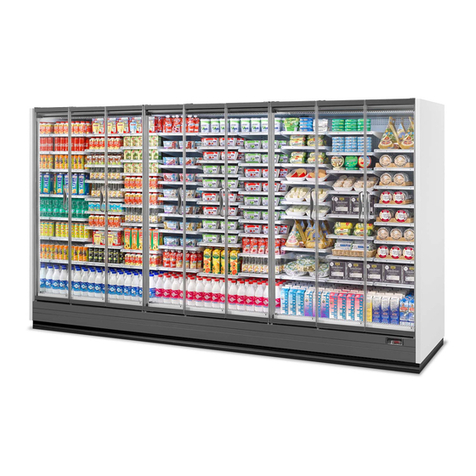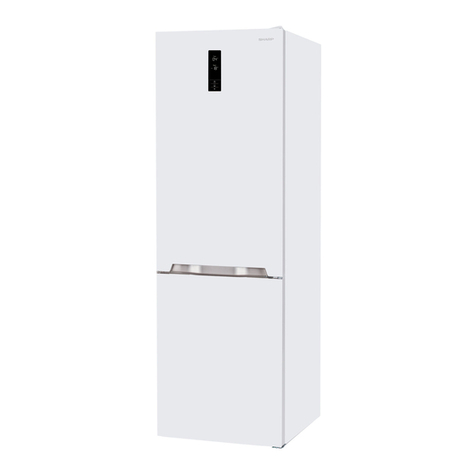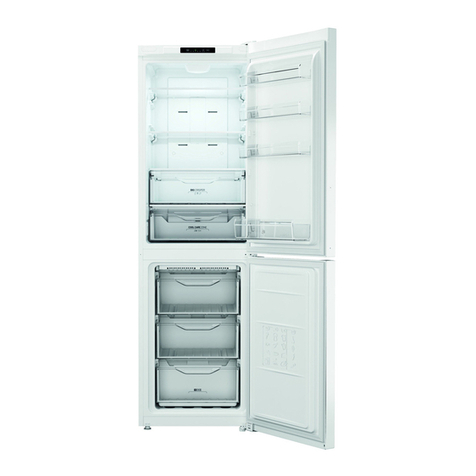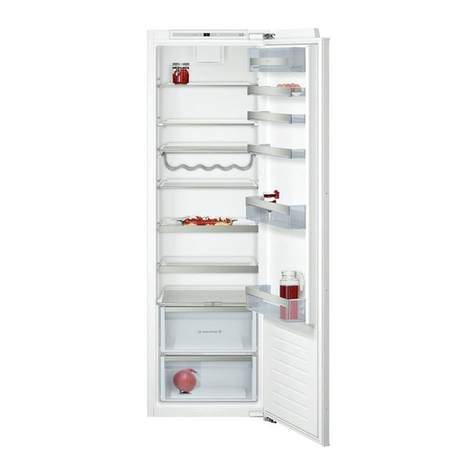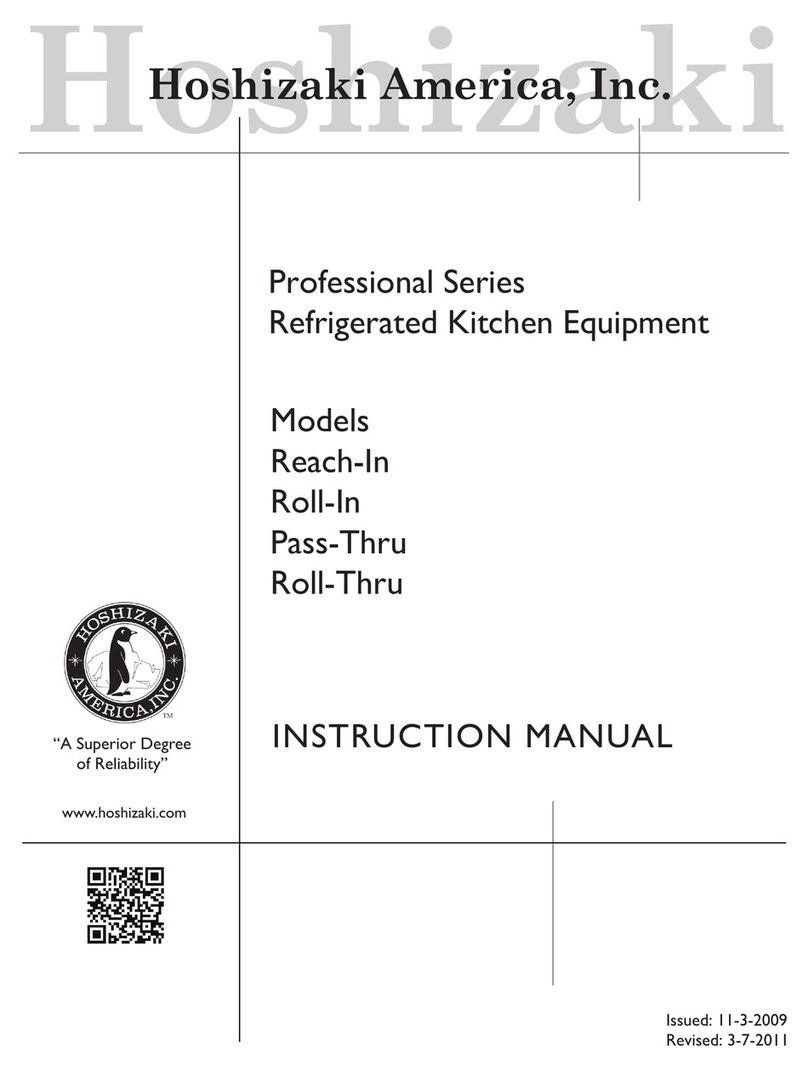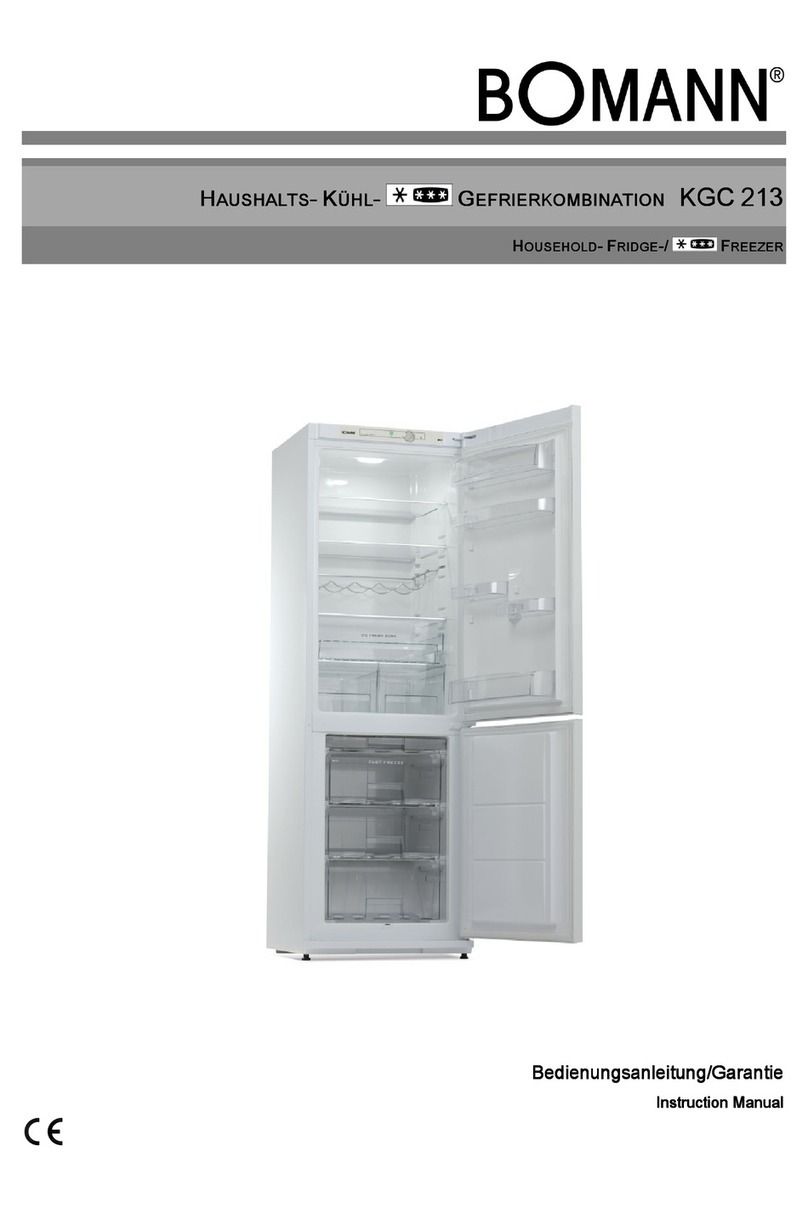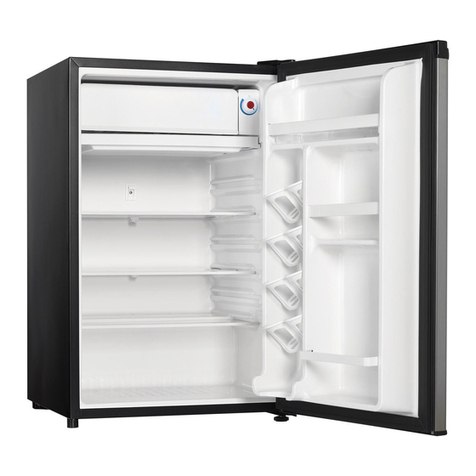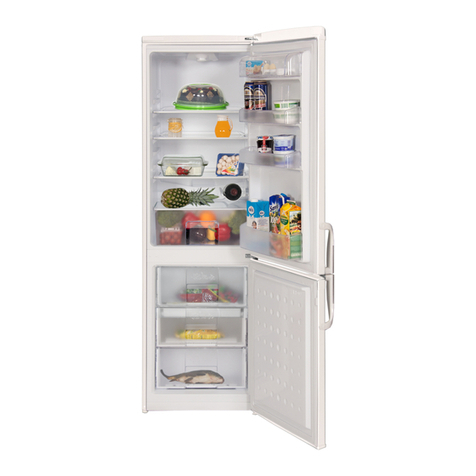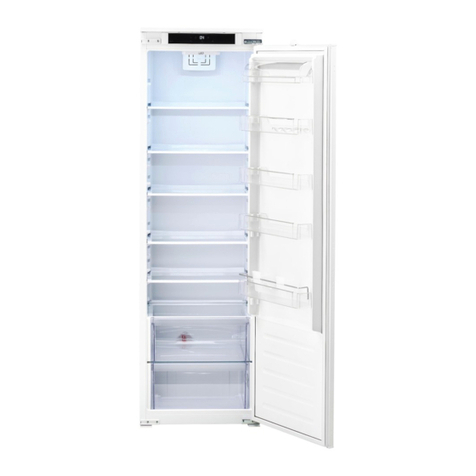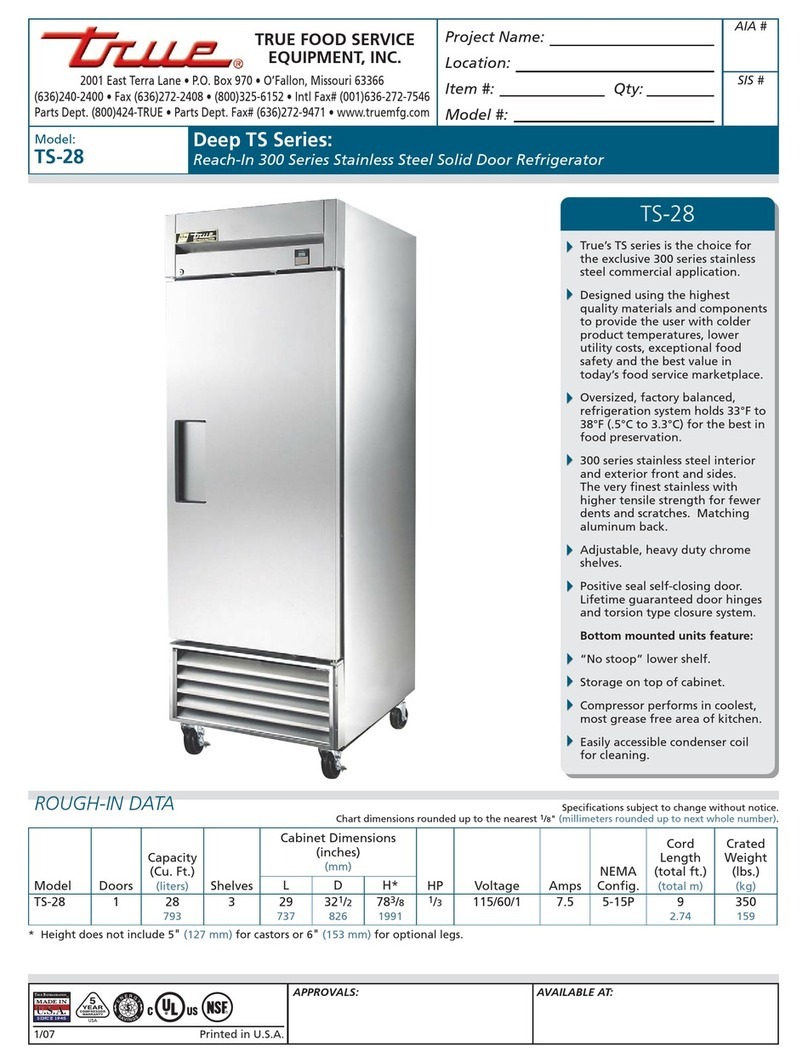Consumer SupportTroubleshooting Tips
Operating InstructionsSafety Instructions Installation Instructions
About the automatic icemaker.
www.GEAppliances.com
Ice Cube Tray Shelf
(on some models)
Some models have a small separate shelf
for ice cube trays.
Ice Trays and Bucket
(on some models)
To remove ice cubes from tray, place the
tray upside down on bucket as shown. Press
down on the tray and the cubes will pop out.
Large Ice Bucket
(on some models)
This bucket is
required
to be used with an
automatic icemaker. When installing an
icemaker and the bucket, the upper basket
on left hand side must be removed first to
make space. If an icemaker is not installed,
the bucket can be removed to provide more
capacity in the freezer compartment. For
Canadian models the bucket is included in
an optional icemaker accessory kit
(IM4-1).
Icemaker Accessory Kit
If your refrigerator did not come already
equipped with an automatic icemaker, an
icemaker accessory kit (IM-4) for US
models or an icemaker accessory kit
(IM4-1) for Canadian Models is available
at extra cost.
Automatic Icemaker
(on some models)
The icemaker will produce seven cubes
per cycle—approximately 100–130 cubes
in a 24-hour period, depending on freezer
compartment temperature, room
temperature, number of door openings
and other use conditions.
If the refrigerator is operated before the
water connection is made to the icemaker,
set the power switch to
O (off)
.
When the refrigerator has been connected
to the water supply and installation is
complete, set the power switch to
I (on)
. The
green indicator light on the Icemaker will
remain off when the icemaker is turned on.
To ensure that the Icemaker is working,
depress the freezer light switch located on
the upper right side of the freezer com-
partment. When the freezer door is opened,
power to the icemaker is turned off. This
prevents ice from spilling out of the bucket.
Avoid opening the freezer door after
installation of the icemaker for approxi-
mately 4 hours. This will ensure that
freezing temperatures have achieved a
desirable temperature for ice formation and
prevent water from spilling out of the
icemaker mould.
The icemaker will fill with water when it
cools to 15°F (-10°C). A newly-installed
refrigerator may take 12 to 24 hours to
begin making ice cubes.
Throw away the first few batches of ice to
allow the water line to clear.
Be sure nothing interferes with the sweep
of the feeler arm.
When the bin fills to the level of the feeler
arm, the icemaker will stop producing ice.
It is normal for several cubes to be joined
together.
If ice is not used frequently, old ice cubes
will become cloudy, taste stale and shrink.
If ice cubes get stuck in the icemaker, set
the power switch to
O (off)
and remove the
cubes. Set the power switch to
I (on)
to restart
the icemaker.
After the icemaker has been turned on
again, there will be a delay of about 45
minutes before the icemaker resumes
operations.
NOTE: In homes with lower-than-average water
pressure, you may hear the icemaker cycle multiple
times when making one batch of ice.
A newly-installed refrigerator may take 12–24 hours to begin making ice.
Icemaker
Feeler Arm
Power Switch
Icemaker Installation
A special icemaker mounting block mmuussttbe
used when installing an icemaker.
Directions on how to install the icemaker
mounting block are included in the
Icemaker Accessory Kit Installation
Instructions . For US models, the mounting
block is included with the refrigerator. For
Canadian models, the mounting block is
included in the optional icemaker accessory
kit (IM4-1).
Mounting Block
Part No. WR2M3604
Part No.
WR30S1
Screws
Part No. WR1M478
9
